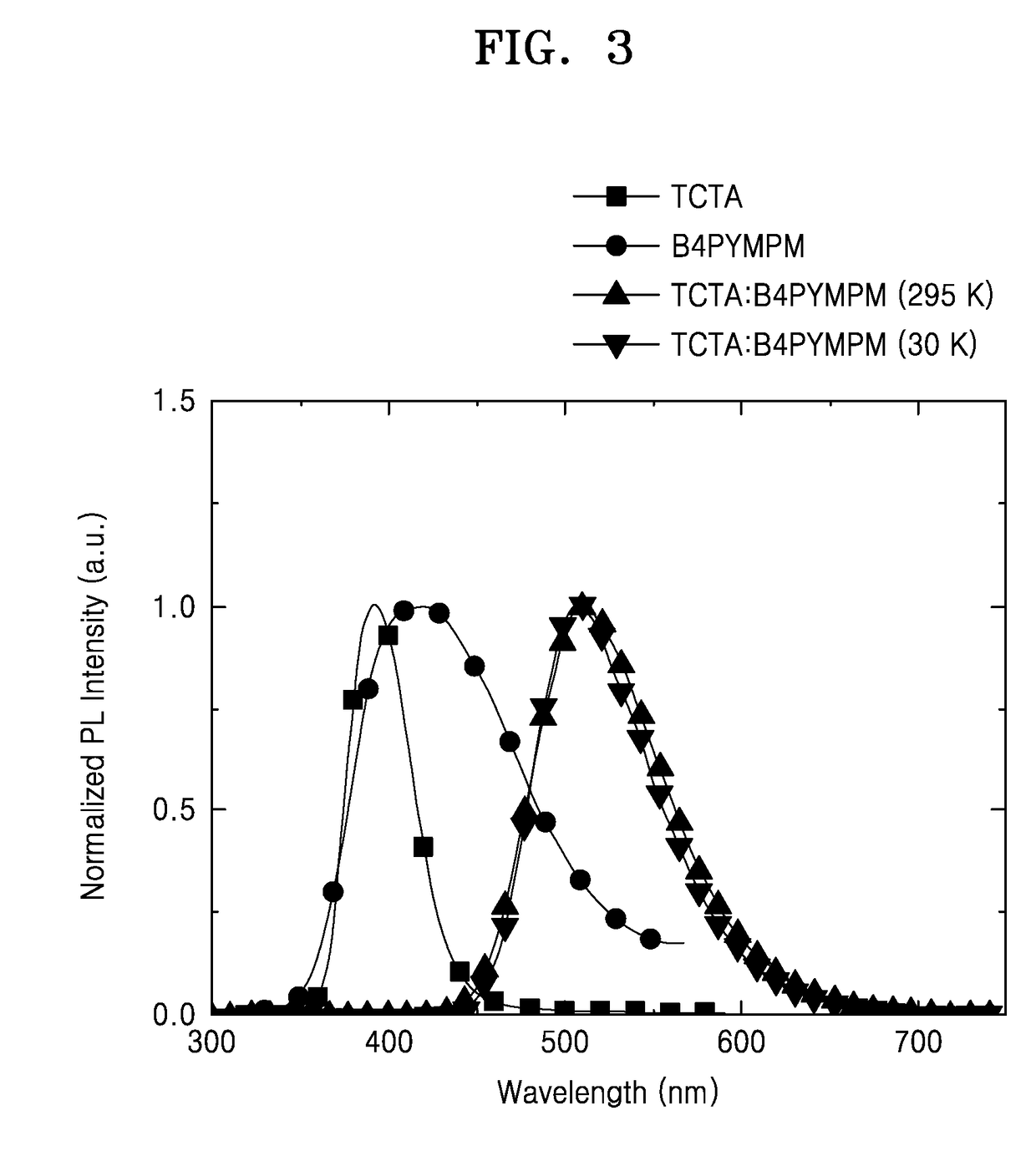Organic light-emitting device comprising host, phosphorescent dopant and fluorescent dopant
- Summary
- Abstract
- Description
- Claims
- Application Information
AI Technical Summary
Benefits of technology
Problems solved by technology
Method used
Image
Examples
example 1
[0083]1,000 Å-thick-patterned ITO which is on a glass substrate, was used as an anode. The ITO glass substrate was pre-washed with isopropyl alcohol and acetone, and then was exposed to UV-ozone for 10 minutes. Next, TAPC was deposited on the ITO glass substrate to form a hole injection layer having a thickness of 650 Å. TCTA was deposited on the hole injection layer to form a hole transport layer having a thickness of 100 Å. Then, (TCTA:B4PYMPM):Ir(ppy)3:DCJTB, wherein a molar ratio of TCTA to B4PYMPM was maintained to 1:1, was co-deposited on the hole transport layer at a weight ratio of 97.5:2:0.5 to form an emission layer having a thickness of 300 Å. Then, B4PYMPM was deposited on the emission layer to form an electron transport layer having a thickness of 550 Å. Next, LiF was deposited on the electron transport layer to form an electron injection layer having a thickness of 7 Å, and then Al was deposited thereon to form a cathode having a thickness of 1,000 Å. Here, each of the...
example 2
[0084]An organic light-emitting device of Example 2 was prepared in the same manner as in Example 1, except that in forming the emission layer, (TCTA:B4PYMPM):Ir(ppy)3:DCJTB were co-deposited at a weight ratio of 95.5:4:0.5 instead of a weight ratio of 97.5:2:0.5.
example 3
[0085]An organic light-emitting device of Example 3 was prepared in the same manner as in Example 1, except that in forming the emission layer, (TCTA:B4PYMPM):Ir(ppy)3:DCJTB were co-deposited at a weight ratio of 91.5:8:0.5 instead of a weight ratio of 97.5:2:0.5.
PUM
| Property | Measurement | Unit |
|---|---|---|
| Energy | aaaaa | aaaaa |
| Energy level | aaaaa | aaaaa |
| Energy level | aaaaa | aaaaa |
Abstract
Description
Claims
Application Information
 Login to View More
Login to View More - R&D
- Intellectual Property
- Life Sciences
- Materials
- Tech Scout
- Unparalleled Data Quality
- Higher Quality Content
- 60% Fewer Hallucinations
Browse by: Latest US Patents, China's latest patents, Technical Efficacy Thesaurus, Application Domain, Technology Topic, Popular Technical Reports.
© 2025 PatSnap. All rights reserved.Legal|Privacy policy|Modern Slavery Act Transparency Statement|Sitemap|About US| Contact US: help@patsnap.com



